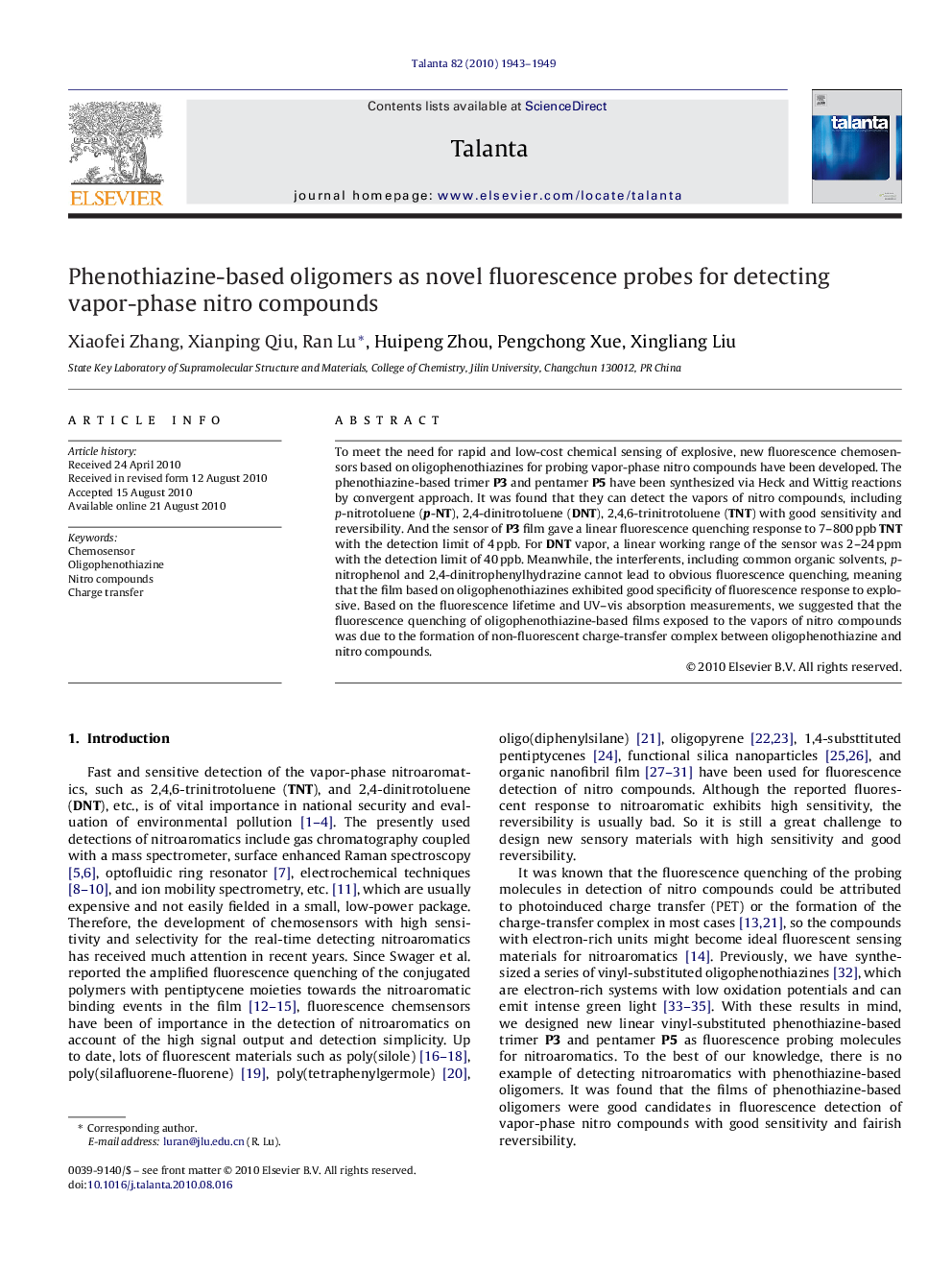| Article ID | Journal | Published Year | Pages | File Type |
|---|---|---|---|---|
| 1246223 | Talanta | 2010 | 7 Pages |
To meet the need for rapid and low-cost chemical sensing of explosive, new fluorescence chemosensors based on oligophenothiazines for probing vapor-phase nitro compounds have been developed. The phenothiazine-based trimer P3 and pentamer P5 have been synthesized via Heck and Wittig reactions by convergent approach. It was found that they can detect the vapors of nitro compounds, including p-nitrotoluene (p-NT), 2,4-dinitrotoluene (DNT), 2,4,6-trinitrotoluene (TNT) with good sensitivity and reversibility. And the sensor of P3 film gave a linear fluorescence quenching response to 7–800 ppb TNT with the detection limit of 4 ppb. For DNT vapor, a linear working range of the sensor was 2–24 ppm with the detection limit of 40 ppb. Meanwhile, the interferents, including common organic solvents, p-nitrophenol and 2,4-dinitrophenylhydrazine cannot lead to obvious fluorescence quenching, meaning that the film based on oligophenothiazines exhibited good specificity of fluorescence response to explosive. Based on the fluorescence lifetime and UV–vis absorption measurements, we suggested that the fluorescence quenching of oligophenothiazine-based films exposed to the vapors of nitro compounds was due to the formation of non-fluorescent charge-transfer complex between oligophenothiazine and nitro compounds.
